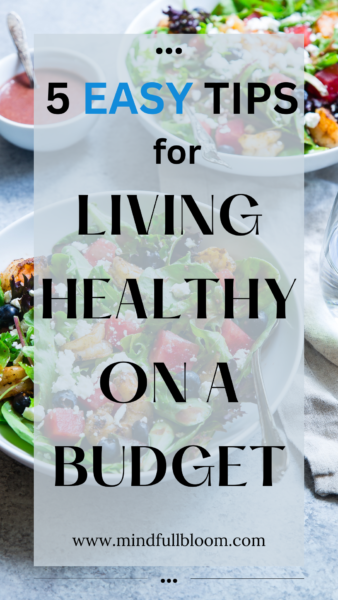
This is a special guest post from life and career coach Julie Morris (juliemorris.org).
Did you know that living a healthy lifestyle can help you save money? By choosing healthy alternatives to your typical snacks, meals, and leisure activities, you can spend less while enjoying better health!
At the same time, maintaining healthy habits will reduce your spending on healthcare and health insurance. If leading a healthy lifestyle means biking or walking to work, you’ll save some money on gas as well!
Cooking at home is much more affordable than getting takeout or dining in a restaurant. Here are some tips to help you maximize the financial benefits of a healthy lifestyle!

1. Build a Health-Based Business
If you’re passionate about health, consider monetizing your healthy lifestyle by launching a health-based business! For example, you could open a boutique fitness center in your community, start an online ecommerce store selling supplements, or write an affiliate marketing blog about your own money-saving health tips.
Whatever your business idea, be sure to write a solid business plan. Your business plan should include a description of your company, a market analysis, and your marketing and sales plan, among other important things.
Once you’re all set up, look for an online invoice generator you can use to create professional-looking invoice templates to upload to your chosen accounting platform. Just choose a pre-made template and customize it with your own branding and business information. It’s as easy as that!

If starting your own business isn’t in the cards, you may choose to switch to a career that focuses on healthy eating and food preparation. Be sure to first have an updated resume to hand to or send to potential employers.
Producing a slick and professional-looking resume can be easily done thanks to online tools that allow you to choose from templates for customization.
2. Plan Your Meals in Advance
The easiest way to save money on healthy groceries is to plan your meals in advance. Verywell Fit suggests taking advantage of the weekend to sit down and plan your meals for the upcoming week.
It helps to have a bank of healthy recipes you enjoy that you can pick through during meal planning. This will make it easy to create grocery lists! If you really want to save, base your meal planning around weekly promotions and sales.

The same strategy applies to caffeine. Given how much coffee many of us tend to drink, it’s worth taking a moment to do some planning so that we’re monitoring our intake, as well as investing in sources of caffeine that are healthy and worth their price.
3. Shop at Local Produce Markets
Eating plenty of whole fruits and vegetables is great for your health. While fresh produce can sometimes be expensive from large grocery chains, local produce markets tend to be gentler on the wallet.
Plus, shopping local means supporting your neighbors and keeping taxes in your community. Local produce is often more nutritious, as well.
According to Virtua.org, recently picked fruits and vegetables pack more nutrients than those that were picked a long time ago and traveled all the way to your grocery store.

4. Limit Highly-Processed Foods
Besides packing more nutrient-dense produce into your diet, try to limit your consumption of highly-processed foods. Healthline describes highly-processed foods as foods that contain little or no real vegetables, fruits, or whole grains.
They’re typically high in sugar, refined grains, fats, salt, and preservatives. They’re also more expensive! Steer clear of highly-processed foods for the sake of your health and your wallet.
5. Exercise at Home or in Nature
You don’t need a gym membership to stay fit. You can get a good workout at home, whether it’s in your own home gym or simply using items like resistance bands and a step machine.
If exercising at home is your choice, be sure to have a clean, orderly, and decluttered area to focus on your regimen.
Also, look for opportunities to exercise for free in nature. Go for a walk, take a hike, or try trail running.

If you’re lucky enough to have a forested bike path nearby, buy a cheap used bike and enjoy some low-impact exercise.
Getting active outside offers better air quality, beneficial vitamin D, and the mood-boosting effects of spending time in a natural environment.
You Can Live Healthy on a Budget
You don’t need to empty your savings account to live a healthy lifestyle. In fact, being healthy will help you save money in the long run!
Look for free exercise options, plan your meals in advance to keep your grocery spending under budget, and consider monetizing your healthy habits by starting a business!
About the Author
Julie Morris is a life and career coach. She thrives on helping others live their best lives. It’s easy for her to relate to clients who feel run over by life because she’s been there.
After years in a successful (but unfulfilling) career in finance, Julie busted out of the corner office that had become her prison.
Check out her website for more information: juliemorris.org


